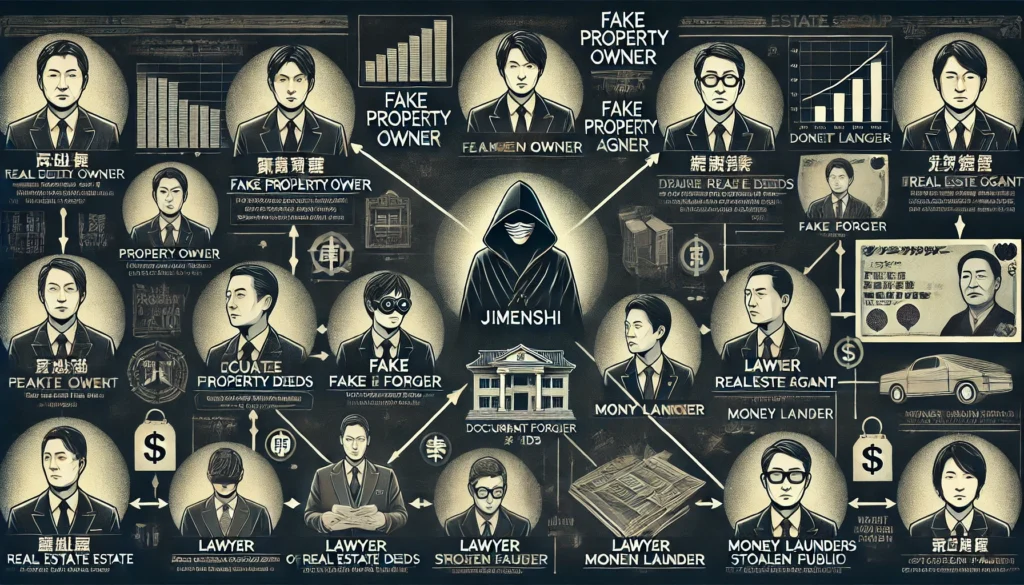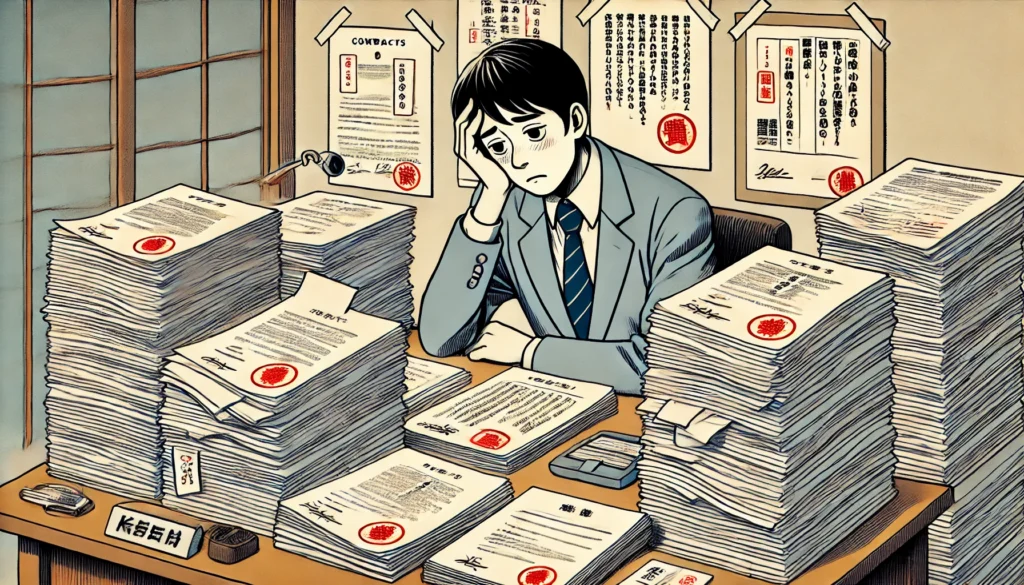1. Introduction
In 2024, Netflix released the drama Tokyo Swindlers, a series that shocked viewers with its intricate fraud schemes. What many may not realize is that this drama is based on a real-life fraud case in Japan: The Sekisui House Jimenshi Fraud Case.
In this case, one of Japan’s largest home builders, Sekisui House, was tricked by a professional fraud group, losing over 5.5 billion yen (about 50 million USD) in a sophisticated real estate scam. The perpetrators, known as “Jimenshi” (land sharks), used fake property owners, forged documents, and even fake lawyers to make the transaction appear legitimate.
How could such an elaborate scam succeed? What vulnerabilities exist in Japan’s real estate system? In this article, we will explain the details of the Sekisui House Jimenshi fraud case, its impact, and why Japan is particularly susceptible to these types of scams.
2. What is a “Jimenshi”?

Definition of Jimenshi
“Jimenshi” (地面師) refers to professional fraudsters who illegally sell properties they do not own, deceiving buyers into paying large sums of money. Their tactics involve creating fake property owners, forging legal documents, and even hiring lawyers or real estate professionals to make the transaction appear legitimate.
History of Jimenshi in Japan
Jimenshi have been active in Japan since the post-war era, and many large-scale fraud cases occurred during the bubble economy of the 1980s. While Japan’s real estate industry has been modernizing, Jimenshi scams continue to evolve, making them an ongoing concern.
3. The Sekisui House Jimenshi Fraud Case
(1) The Targeted Property

The scam took place in Gotanda, Shinagawa Ward, Tokyo, involving a 600-tsubo (approx. 2,000 m²) plot of land.
This land was once home to a long-standing ryokan (traditional inn) called Kaikikan (海喜館), and its elderly female owner was hospitalized at the time of the scam.
The land was considered highly valuable, estimated to be worth over 10 billion yen (about 90 million USD) if developed.
Realizing that the owner was unavailable, the fraudsters saw a golden opportunity.
(2) The Elaborate Scam Tactics

The Jimenshi fraud group meticulously planned the scam over several months, using an intricate series of fraudulent techniques to deceive Sekisui House.
✅ Creating a Fake Property Owner
• A fake owner was presented in place of the real landowner.
• A forged passport and driver’s license were created to pass identity checks.
• Sekisui House’s representatives never met the real owner, allowing the deception to proceed.
✅ Hiring Fake Lawyers and Judicial Scriveners
• Real lawyers were unknowingly involved to make the transaction appear legitimate.
• The contract was signed at an official public notary office, adding further credibility.
✅ Psychological Pressure
• The fraudsters pressured Sekisui House to act quickly, claiming:
• “The owner urgently needs to sell.”
• “Other companies are competing for this land.”
• This forced Sekisui House to rush the decision without proper verification.
✅ Using a Fake Middleman to Hide the Scam
• A bogus real estate company was introduced as the “buyer” in an initial contract.
• Later, Sekisui House took over the contract, making the deal appear legitimate.
✅ Outcome: Sekisui House Paid Over 5.5 Billion Yen, Then the Fraud Was Exposed
• Sekisui House paid a 1.2 billion yen (12 million USD) deposit, followed by a total of over 5.5 billion yen (50 million USD).
• However, when they tried to register the property ownership, they discovered that the real owner had not been involved in the transaction, exposing the scam.
Why Is This Type of Fraud So Hard to Catch?

Jimenshi fraud is difficult to detect and prosecute due to its highly organized structure and rapid execution. Fraud groups meticulously divide roles among members, including fake property owners, document forgers, dummy real estate agents, and intermediaries, ensuring that each participant can claim they had no knowledge of the overall crime.
For example, the impersonator may insist they were merely acting as a proxy, the document forger may claim they were just fulfilling a request, and legal professionals involved in the transaction may argue that everything appeared legitimate.
Additionally, these scams operate at an extremely fast pace, with money being transferred to different accounts or overseas within days of the deal closing, making it nearly impossible to trace.
Furthermore, when the victim is a corporation, internal investigations often delay police involvement, giving fraudsters time to escape. These factors combine to make Jimenshi fraud one of the hardest crimes to detect and prosecute. In the Sekisui House Jimenshi fraud case, the key perpetrators were eventually arrested, but a significant portion of the stolen funds remains unrecovered, highlighting the challenges of combating real estate fraud in Japan.
4. The Impact of the Case

(1) Financial Losses for Sekisui House
• Total damage: over 5.5 billion yen (some reports estimate up to 6.3 billion yen).
• The fraudsters disappeared with the money, making recovery difficult.
(2) Internal Corporate Chaos
• The scandal forced the resignation of Sekisui House’s president.
• Following the case, power struggles and factional conflicts arose within the company’s management.
(3) Changes in Japan’s Real Estate Industry
• After the case, Japan strengthened identity verification procedures for real estate transactions.
• However, Jimenshi frauds remain a threat, requiring continued vigilance.
5. Why Does Jimenshi Fraud Exist in Japan?

Japan has unique structural factors that allow Jimenshi frauds to occur.
(1) The Inkan (Stamp) Culture and Paper-Based System
• In Japan, real estate contracts are heavily reliant on official seals (inkan) and paper documents.
• This means that if a fraudster forges a seal and creates a fake document, they can complete a sale.
(2) Complex Real Estate Transactions
• Japan’s real estate procedures are highly bureaucratic, requiring many documents.
• As a result, if all the paperwork looks correct, companies may assume the deal is legitimate without thorough checks.
(3) Extremely High Land Prices
• Tokyo has some of the most expensive real estate in the world.
• A single successful scam can yield billions of yen (tens of millions of dollars), making it highly attractive to fraudsters.
6. Conclusion
• The Sekisui House Jimenshi Fraud Case is one of Japan’s largest real estate scams.
• The fraudsters used fake property owners, lawyers, and documents to deceive a major corporation.
• Japan’s reliance on inkan, complex real estate procedures, and high land prices contribute to Jimenshi fraud.
• To prevent future frauds, Japan must improve identity verification and digitize real estate transactions.
Netflix’s Tokyo Swindlers portrays a fictionalized version of these real-life scams, but the Sekisui House case reminds us that such frauds are not just fiction—they are real, and they can happen to anyone.
Recommended Articles






Comments